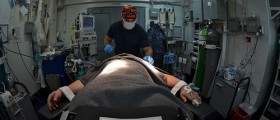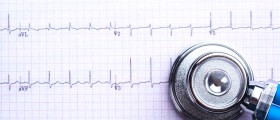
Endoscopy is an internal examination procedure. Endoscope is a small video camera on a long thin flexible tube. Sedatives are given during the procedure, but the patient is usually awake. Endoscope enters the body through throat, anus or small surgical incision.When diagnostic tools such as x-ray or MRI do not produce sufficient results, endoscopy is performed. It can perform and confirm diagnosis, or even be used to treat some conditions.Endoscopy can investigate breathing disorders, internal bleeding, stomach ulcer, irritable bowel syndrome, chronic diarrhoea and urinary tract infections.Ultrasound probe attached to endoscope can be used to capture images of organs that are hard to reach externally. Biopsy is a procedure where endoscope is used in caner diagnose and treatment. Endoscope can obtain small tissue samples that are later tested for cancerous cells. By performing biopsy in some cases, major surgery is avoided.
Surgical uses
Endoscopes can be equipped with different tools to perform certain surgical procedures. These endoscopes can be used to remove foreign objects from digestive system and lungs like small, to remove gallbladder, or tie and seal the fallopian tubes. By making small incision in the body surgeons can use endoscope to perform Laparoscopy also known as keyhole surgery. This way the recovery process is a lot faster than it would be after a regular surgery. Fibre optics use crystal clear fibre based flexible glass with amazing ability to transmit light far and fast. Therefore invention of fibre optics improved endoscope technology significantly in the 1960s.The endoscopy procedure is not new. The first endoscope was invented in 1805 and consisted of a large tube that was lit up by a candle. However, these primitive devices were often too bulky and awkward to be of much use.
Specialised endoscopies
Various types of endoscopes are used to perform different types of examination. Gastroscopes can examine stomach, small intestine and gullet. Colonoscopes are used to examine large intestine. Bronchoscopes can examine lungs and airways. Arthroscopes examine the joints. Hysteroscopes are used for womb examination. Cystoscopes can examine the bladder.
Wireless capsule endoscopy
A fairly new kind of endoscopy is wireless capsule endoscopy. Like the name says this endoscopy uses a wireless capsule. The capsule is the size of a pill and is inserted into the body by swallowing. It is capable of transmitting the images wirelessly. Therefore the capsule enters the body, takes the required images inside the digestive system and stomach and leaves the body naturally by going to toilet. Wireless capsule endoscopy is known to diagnose cases of internal bleeding inside digestive system that are a result of no obvious cause.Downside of the capsule is that it is still too big. There are cases of capsule being too difficult to swallow, causing problems when exiting the body or blocking the bowel by getting stuck in the narrow bowel area.

















Your thoughts on this
Loading...